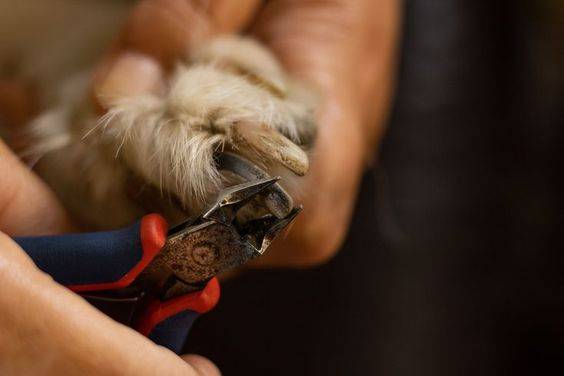Creating a saltwater aquarium the vibrant colors of tropical fish, the intricate beauty of coral reefs, and the tranquil aquatic environment can turn any room into a serene underwater oasis. However, setting up and maintaining a saltwater aquarium requires careful planning, proper equipment, and a commitment to regular upkeep. This guide will walk you through the essential steps to create and sustain a thriving saltwater aquarium, ensuring that your underwater world remains healthy and beautiful.
Why Choose a Saltwater Aquarium?
Saltwater aquariums offer several benefits that make them a popular choice among aquarium enthusiasts:
- Diverse Marine Life: Saltwater aquariums can host a wide variety of marine species, including fish, corals, and invertebrates, each with unique colors and behaviors.
- Aesthetic Appeal: The vivid colors and dynamic environments of saltwater tanks can be visually stunning, creating a captivating focal point in any room.
- Educational Value: Maintaining a saltwater aquarium provides a hands-on learning experience about marine biology, ecosystems, and the importance of water chemistry.
Planning Your Saltwater Aquarium
Before diving into the setup process, it’s crucial to plan your aquarium meticulously:
- Determine the Tank Size: The size of your aquarium will depend on the space available and the types of marine life you want to keep. A larger tank (30 gallons or more) is generally recommended for beginners, as it provides a more stable environment and greater flexibility in stocking.
- Choose the Location: Place your tank in a location away from direct sunlight, drafts, and high-traffic areas. Ensure it’s on a sturdy stand capable of supporting the weight of the filled tank.
- Decide on the Tank Type: You can choose between a fish-only tank, a fish-only with live rock (FOWLR) tank, or a reef tank. Each type has different requirements in terms of equipment and maintenance.
Essential Equipment for Your Saltwater Aquarium
Investing in the right equipment is critical to the success of your saltwater aquarium. Here’s a list of essential items:
- Tank and Stand: A glass or acrylic tank and a sturdy stand designed to support its weight.
- Filtration System: A high-quality filtration system, including mechanical, chemical, and biological filters, is crucial for maintaining water quality.
- Protein Skimmer: This device removes organic waste from the water, helping to maintain a healthy environment.
- Heater and Thermometer: Saltwater tanks need a stable temperature, typically between 75-80°F (24-27°C).
- Lighting: Proper lighting is essential, especially for reef tanks, to support the growth of corals and other photosynthetic organisms.
- Powerheads: These devices create water flow, mimicking natural ocean currents and ensuring proper gas exchange and waste removal.
- Hydrometer or Refractometer: These tools measure the salinity of your water, which should be maintained at around 1.020-1.026 specific gravity.
- Test Kits: Regularly test for pH, ammonia, nitrite, nitrate, and other important water parameters.
- Salt Mix and RO/DI Water: Use a high-quality marine salt mix and purified water to create and maintain the saltwater environment.
Setting Up Your Saltwater Aquarium
- Set Up the Tank and Stand: Position the tank on the stand and ensure it’s level.
- Install the Filtration System and Protein Skimmer: Follow the manufacturer’s instructions for proper installation.
- Add Substrate: Choose a marine substrate, such as aragonite sand or crushed coral, and add it to the bottom of the tank.
- Prepare and Add Saltwater: Mix your marine salt with RO/DI water according to the instructions on the salt mix.
- Install the Heater and Powerheads: Position these devices according to the manufacturer’s guidelines to ensure even heat distribution and adequate water flow.
- Set Up the Lighting: Install the lighting system, adjusting it to the needs of your specific tank type.
- Cycle the Tank: Before adding any marine life, the tank must go through a cycling process to establish beneficial bacteria. This process can take several weeks and involves adding a source of ammonia to start the nitrogen cycle.
Stocking Your Saltwater Aquarium
After the cycling process is complete, it’s time to add marine life to your aquarium. Here are some steps to follow:
- Start with Hardy Species: Begin with hardy fish and invertebrates that can tolerate minor fluctuations in water parameters. Examples include clownfish, damselfish, and certain types of snails and hermit crabs.
- Add Live Rock: Live rock not only enhances the aesthetic appeal but also provides natural filtration and habitat for beneficial organisms.
- Introduce Fish Slowly: Add fish gradually, allowing the biological filtration system to adjust to the increased bioload.
- Quarantine New Additions: To prevent disease introduction, quarantine new fish and invertebrates for a few weeks before adding them to the main tank.
Maintaining Your Saltwater Aquarium
Regular maintenance is essential to keep your saltwater aquarium healthy and thriving:
Daily Tasks:
Check the temperature and ensure all equipment is functioning correctly.
Feed your fish and invertebrates an appropriate diet.
Weekly Tasks:
Test water parameters, including pH, ammonia, nitrite, nitrate, and salinity.
Perform a partial water change (10-20%) to remove waste and replenish trace elements.
Monthly Tasks:
Clean the protein skimmer and filtration system.
Replace any mechanical filtration media, such as filter pads or socks.
As Needed:
Top off the tank with fresh RO/DI water to compensate for evaporation.
Prune and care for any live plants or corals.
Inference
Setting up and maintaining a saltwater aquarium is a rewarding endeavor that offers endless opportunities for learning and enjoyment. By carefully planning your setup, investing in quality equipment, and committing to regular maintenance, you can create a thriving marine environment that brings beauty and tranquility to your home. Whether you’re a beginner or an experienced aquarist, the journey of creating and sustaining a saltwater aquarium is filled with discoveries and delights that make it a truly enriching hobby.







